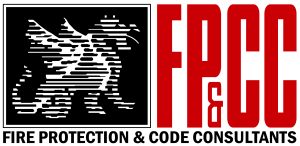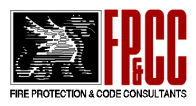The Delicate Balance of Security and Fire Safety in Health Care Occupancies explores this critical issue, highlighting the importance of a well-thought-out design that ensures both patient safety and compliance with fire safety regulations.
Recently, we reviewed an A/E design for an addition to an existing hospital. The design featured locked doors in the path of egress. In the realm of health care facilities, there has been an increased focus on security for both patients and staff. This is a delicate dance between security and fire safety, as locking doors, especially those in the means of egress, can invite tragedy in case of a fire or other emergency.
The NFPA Code Guidelines for Healthcare Facilities
Egress Doors
The National Fire Protection Association (NFPA) has established guidelines aimed at preventing locked door assemblies in the means of egress or interference with the orderly movement of people through door openings. Specifically, Section 7.2.1.5 of the NFPA 101 – 2024 edition code addresses locks and latches.
Two Egress Routes
With few exceptions, according to NFPA 101 Section 7.4.1, each area of a hospital requires two egress routes once an occupant reaches a protected health care corridor. This ensures that if one route is blocked or compromised, there is an alternative path for occupants to safely reach a smoke zone barrier (to defend in place), horizontal barrier, or – as a last resort, exit the building. At least one of the travel paths must reach the smoke zone, horizontal exit or exit within maximum travel distance of 200 ft.
Control of Egress Components
All components in the means of egress must be under the control of the occupants. The code uses the term “immediate and unimpeded” egress to emphasize the importance of quick and unrestricted access to exits during an emergency.
Releasing Hardware Requirements
NFPA 101 Section 7.2.1.5.3 requires that the releasing hardware must be on the egress side and visible under all lighting conditions. This means that the hardware must be operational even in the dark and should not require any special tool or knowledge to use.
Exceptions to the Rule
There are a few instances where locked doors are allowed in health care occupancies. Each of the following have specific requirements which we will address in a future blog:
- The first is for the clinical needs of patients. For example, in a psychiatric ward, doors may be locked to prevent patients from harming themselves or others.
- The second exception is for the special security needs of patients, such as in the case of maternity and newborns or pediatric patients.
- Delayed-egress electrical locking system.
- Sensor-release of electrical locking system.
- Elevator lobby exit access door locking.
Conclusion
While security is a critical concern in health care facilities, it must not compromise fire safety. By adhering to the NFPA code, health care facilities can strike a balance between protecting their occupants and ensuring their safe egress in the event of an emergency. Stay tuned for our next installment, where we’ll explore the specific requirements for permissible locked doors within these sensitive environments.





